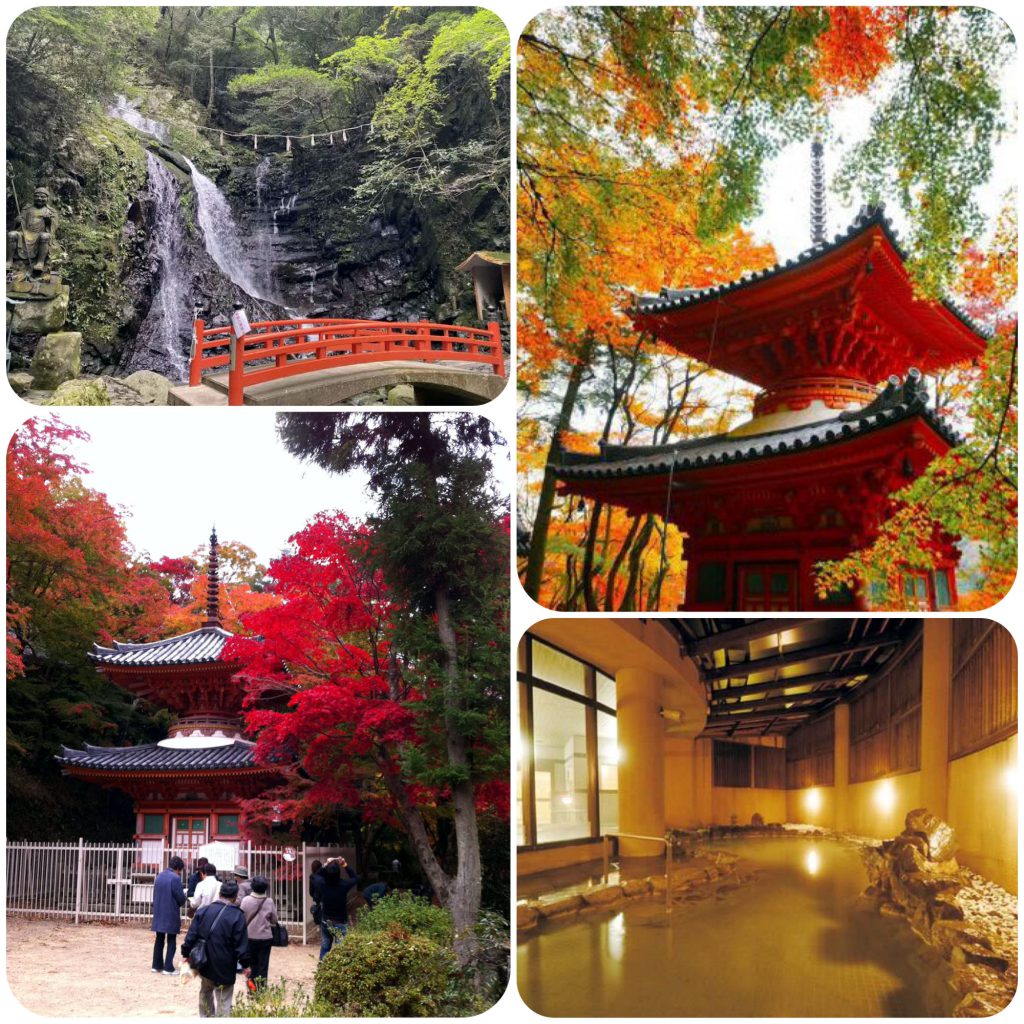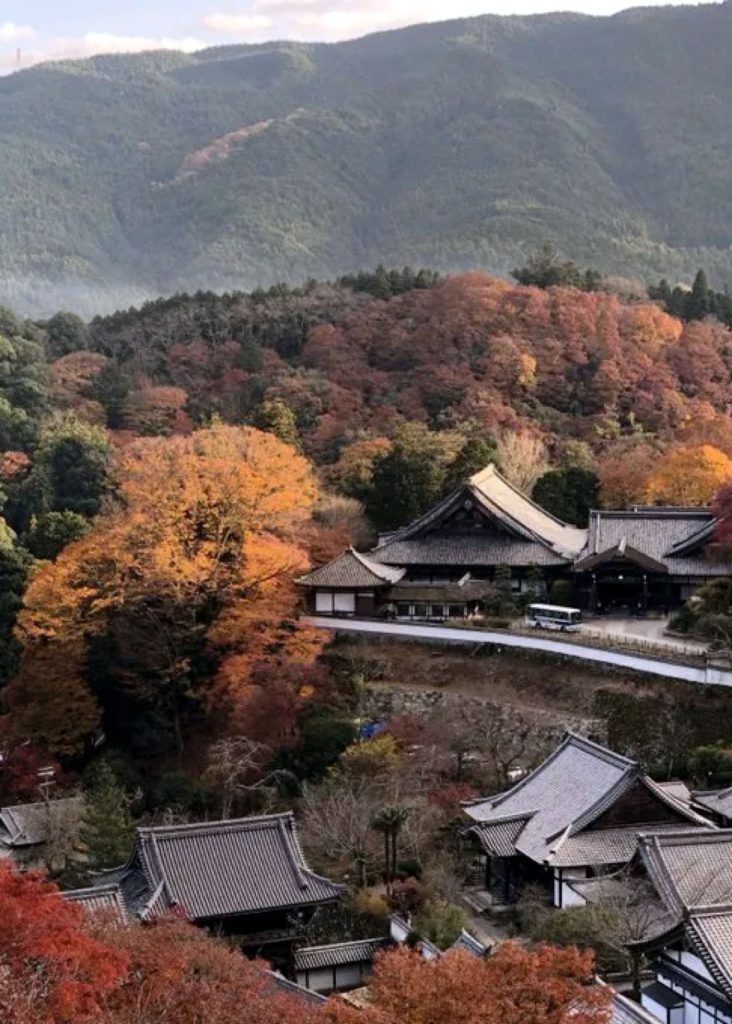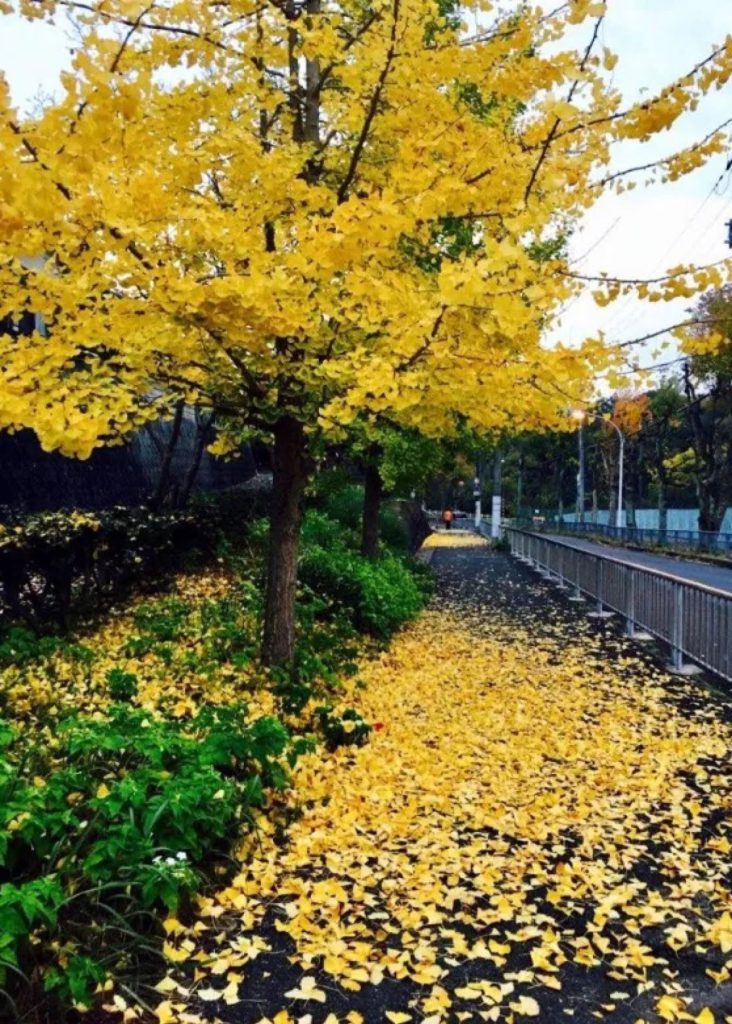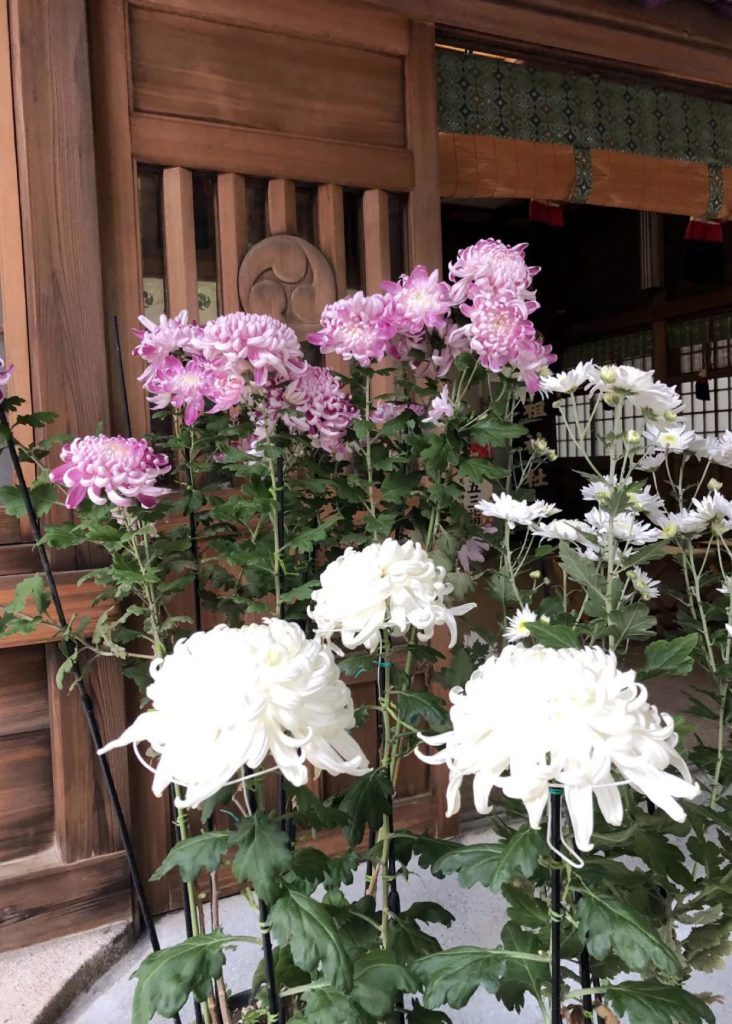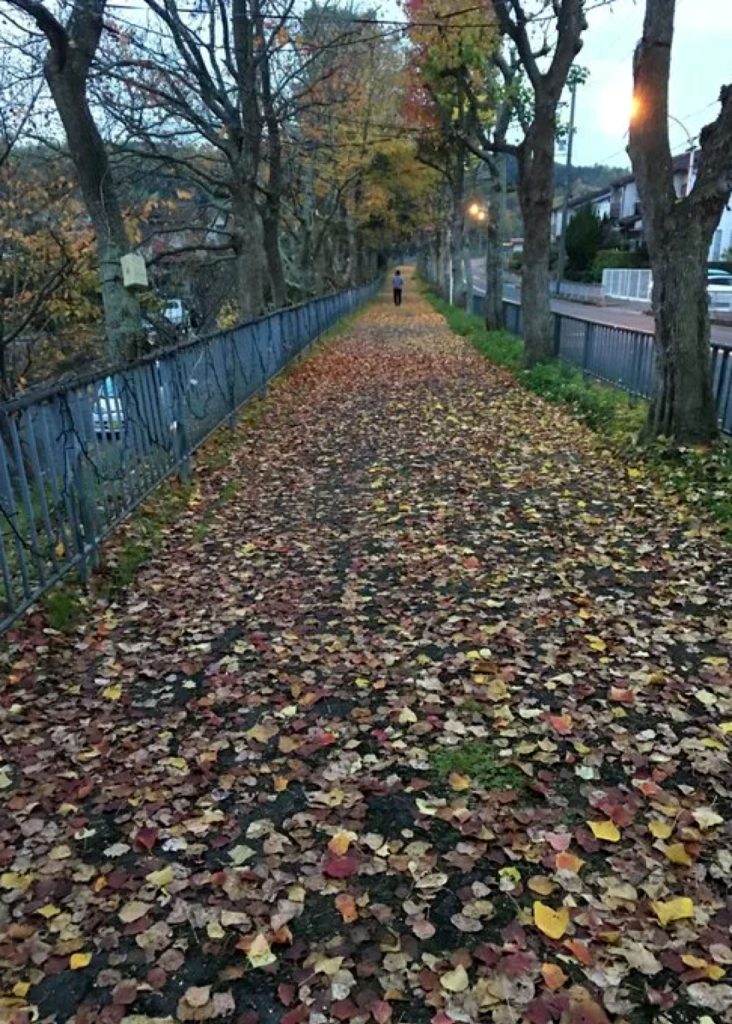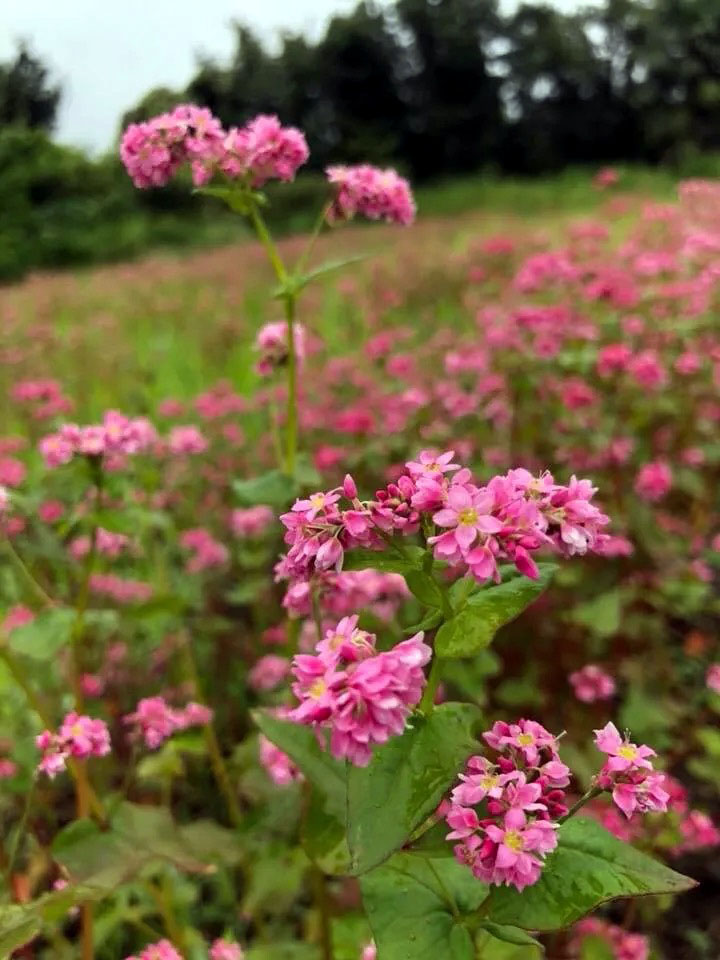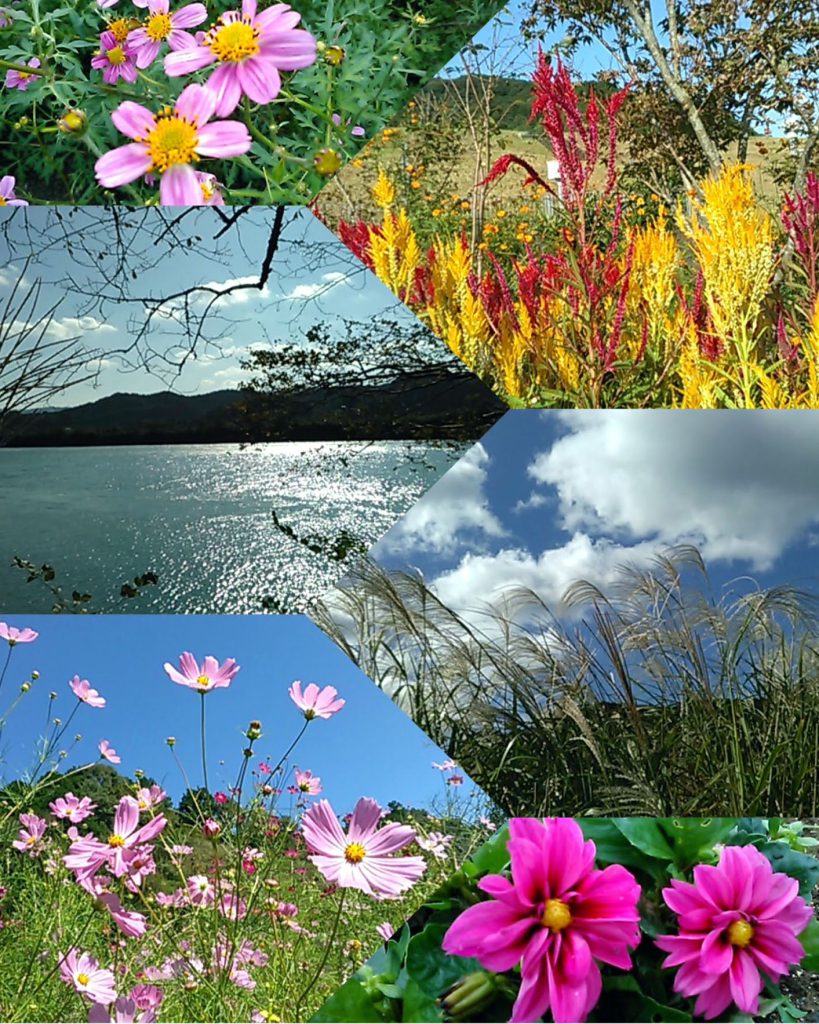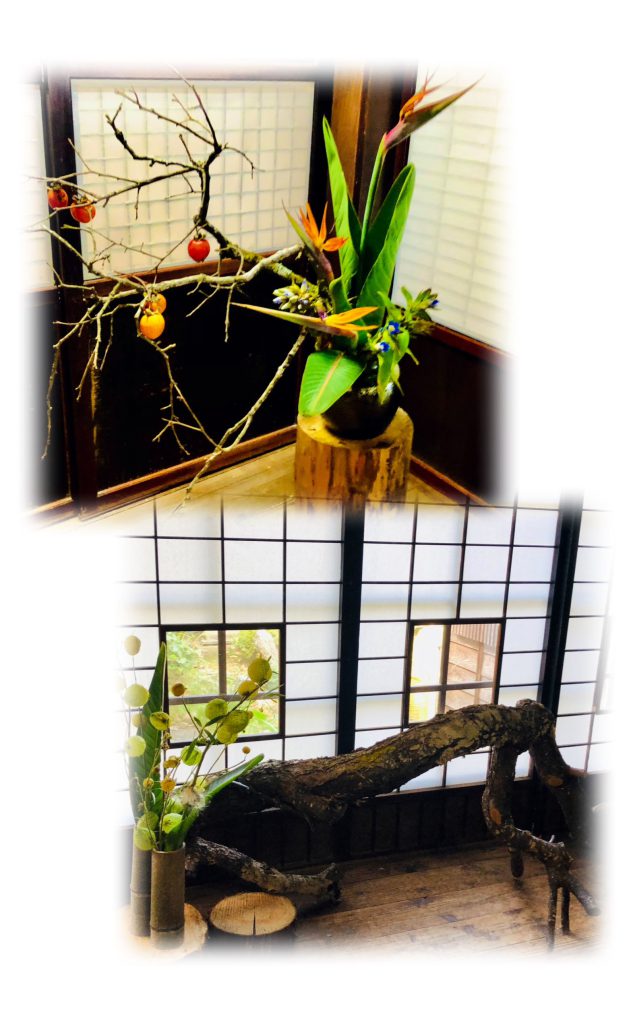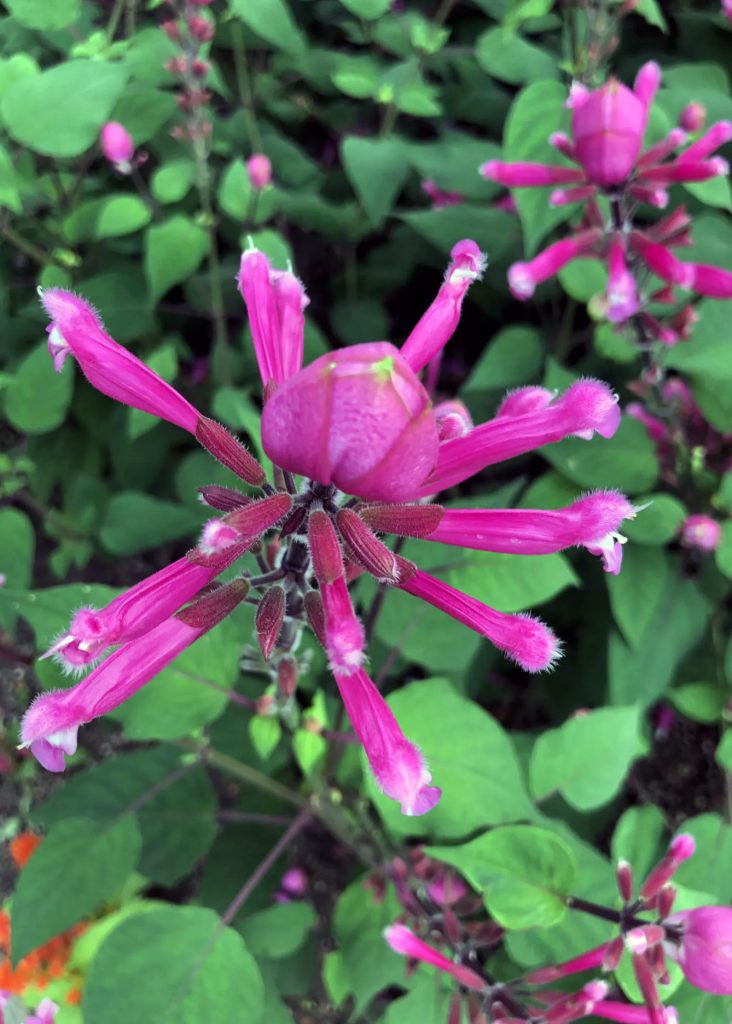
Many of the trees in the park are turning red, and fallen leaves are piled up on the promenade. In such a way, the salvia planted in the flower bed is still blooming well. The buds are swollen in a circle, as if they are about to open the flowers. In spring, I often see people drinking and dancing under the cherry blossoms, but I don’t see people drinking and dancing under the autumn leaves. That’s why Salvia is doing an octopus dance under the autumn leaves instead. By the way, when I looked up the season word for salvia, it seems that it is the child season word for autumn. I thought salvia was a summer flower, but it is true that it is blooming vigorously in autumn.
公園の木々のおおくが紅葉し、遊歩道にも落ち葉が降り積もっています。そんな中、花壇に植えられたサルビアがまだ元気よく咲いています。これから花を開かせようとしているのか、蕾が丸く膨らんでいます。春には桜の下で酒盛りをして踊っている人達をよく見かけますが、紅葉の下で酒盛りをし、踊っている人は見かけません。だから、サルビアが代わって紅葉の下でタコ踊りをしているのです。ところでサルビアの季語はと調べてみたら、秋の子季語だそうです。サルビアは夏の花だと思っていましたが、なるほど秋にも元気よく咲いています。

